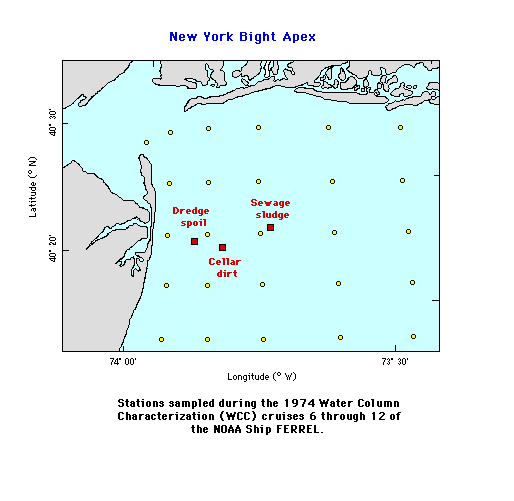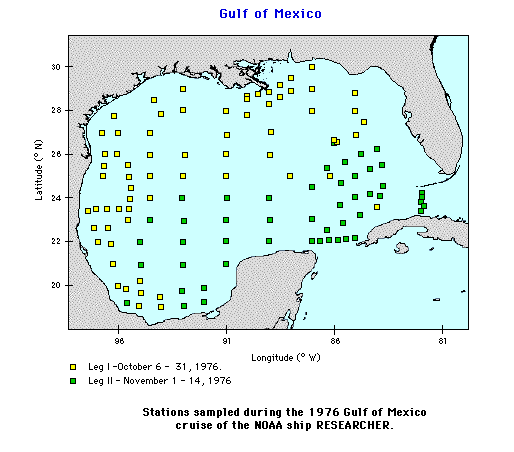

There are significant amounts of documents and data related to the marine and estuarine environment that have never been published and are thus unavailable to the scientific community, academia and the general public. AOML has begun to retrieve some of these documents and data generated by AOML staff, convert them to electronic and printed form, and disseminate the rescued materials online and in printed form.If the data and document rescue is not done, the information will be lost as printed material as electronic media physically deteriorate, technology evolves making accessibility to older electronic storage media difficult, personnel retire, and corporate memory is lost. These data and documents are important because they represent the marine ecosystem in times past, and are required to compare past with current conditions. In these days of diminishing research dollars, staff and vessel time, it is to everyone's advantage to safeguard documents and data sets which have already been collected. The cost of obtaining the data and preparing the documents has already been incurred, and the additional cost to make them readily available is a small fraction of that initial cost.
AOML has rescued and published the results of seven water column chemistry sampling cruises of the NOAA ship FERREL in the New York Bight in 1974. These cruises were part of the NOAA Marine EcoSystem Analysis (MESA) Program (
BELOW ). Work is underway to publish water column chemistry results of the 1976 NOAA ship RESEARCHER in the Gulf of Mexico (BELOW ).For further information on this effort, please contact George Berberian (305 361 4375) or Adriana Cantillo (NOS/National Centers for Coastal Ocean Science, 301 713 3028 x 147).
During 1973, NOAA began the Marine EcoSystem Analysis (MESA) Program, an intensive investigation of the marine ecosystem of the continental shelf off New Jersey and New York, the area known as the New York Bight. The MESA Program included characterization studies of the water column.The initial phase of the marine chemistry observations was restricted to an area of approximately 40 km square in the Apex of the region (BELOW). From April to November, 1974, seven cruises were conducted in the New York Bight Apex covering a 26-station grid aboard NOAA Ship FERREL. Water column sampling was performed simultaneously with physical oceanographic data collection to define the density structure of the water column. Seawater samples were collected and determinations were made of salinity, dissolved oxygen, pH, nutrients (nitrate, nitrite, phosphate, and silicate), total dissolved trace metals (Fe, Cu, Mn, Cd, and Zn), and total suspend ed particulates. The data generated by this effort was described in Segar and Cantillo (1976). The sampling protocols, analytical procedures and analytical results are described in Cantillo and Berberian (1997).
References
Cantillo A. Y., and G. A. Berberian (1997) MESA New York Bight Project water column chemistry data, cruises #6-12 of the NOAA Ship FERREL. NOAA tech. memo. ERL AOML-92. NOAA/AOML, Miami, FL. 62 pp.
Segar, D. A., and A. Y. Cantillo (1976) Trace metals in the New York Bight. In: Middle Atlantic Continental Shelf and the New York Bight. Proc. Symp. M. G. Gross, (ed.). Special Symp. Vol. 2, American Society of Limnology and Oceanography. November 2 - 5, 1976. American Museum of Natural History, New York, NY. 171-98.

Physical and chemical data of the water column were collected as part of the OTEC Project in the Gulf of Mexico and the Straits of Florida. The primary objectives of the study were: 1) to define the circulation pattern and to determine the pathways of wat er transfer from the eastern to western Gulf and visa versa; 2) to determine the distribution and concentration of nutrients, trace metals, dissolved oxygen and salinity in these areas; and 3) to obtain data suitable for input into a numerical model of th e Gulf of Mexico. A total of 117 stations were occupied by AOML staff and other personnel aboard the NOAA ship RESEARCHER (BELOW). Seawater samples were at collecte d at the stations and determinations made of salinity, dissolved oxygen, nutrients (nitrate, nitrite, phosphate, and silicate), total dissolved trace metals (Fe, Cu, Mn, Cd, and Zn), and total suspended particulates. The sampling protocols, analytical pro cedures and analytical results are described in Cantillo and Berberian (1999).
References
Cantillo A. Y., and G. A. Berberian (1999) Oceanographic Conditions in the Gulf of Mexico and Straits of Florida: Fall 1976. NOAA tech. memo. ERL AOML-xxx. NOAA/AOML, Miami, FL. xxx pp. (IN PREPARATION)
